Embroidery art, oh how it pulls you in with its intricate stitches and vibrant colors. It’s a form of aesthetic expression that has been around for centuries, yet still manages to captivate us today.
This ancient craft involves stitching designs onto fabric using thread or yarn, often adding beads, sequins, or other embellishments for extra texture and flair.
What makes embroidery art so aesthetically pleasing? I believe it’s the combination of skill and creativity that goes into each piece. It’s like painting with thread – every stitch is a brush stroke that adds depth and dimension to the canvas.
The way an artist manipulates their material can transform a simple piece of cloth into a work of beauty that tells a story or conveys an emotion.
Moreover, there’s something about the tactile nature of embroidery art that appeals to our senses. You can’t help but want to touch those thickly threaded designs, feel the texture under your fingers.
It brings an added dimension to the artwork which isn’t present in flat paintings or digital creations. That sense of depth and physicality adds another layer to the aesthetic appeal of this art form.
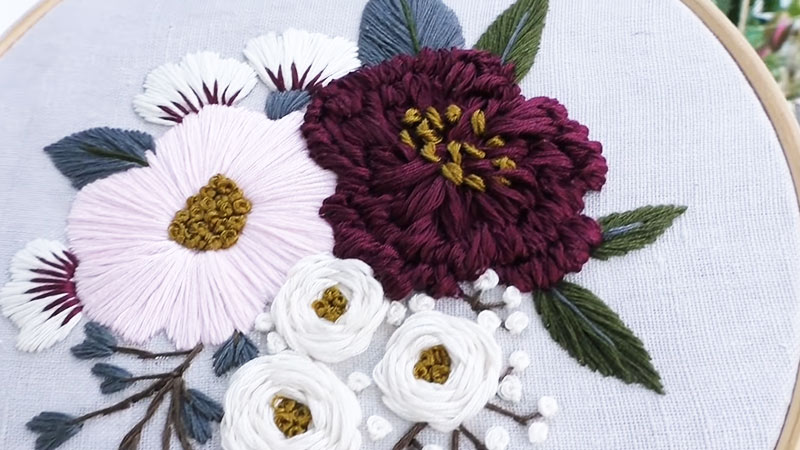
Definition of Embroidery Art
Embroidery art isn’t just some trend that’s popped up. It’s an ancient technique, rich with history and cultural significance.
In its simplest form, embroidery involves using a needle and thread to create designs on fabric. Yet this basic definition hardly does justice to the beauty and complexity of this craft.
A variety of stitches are used in embroidery such as backstitch, chain stitch, satin stitch, cross-stitch etc. Each one can be manipulated by skilled hands to produce different effects – from delicate shading to bold lines and textures.
The choice of material also plays a critical role in determining the final aesthetic.
The magic of embroidery lies not only in the skillful manipulation of thread but also in its versatility as an art form.
From decorating garments and household items to creating standalone works for display, embroidery can be adapted for almost any artistic vision or practical purpose.
While it might seem like a humble craft at first glance, don’t let that fool you: Embroidery is an incredibly dynamic medium offering limitless possibilities for self-expression.
So next time you see an embroidered piece, remember – what you’re looking at is more than mere decoration; it’s centuries-old craftsmanship meeting individual creativity head-on.
History of Embroidery Art

I’ve often marveled at the rich tapestry that is the history of embroidery art. Tracing its roots, we find ourselves traveling back in time to ancient civilizations.
It’s fascinating to think that as early as 30,000 BC, our ancestors were already embellishing their clothing with stitched patterns!
In Ancient Egypt, for instance, embroidered clothing was a sign of wealth and status. This trend wasn’t confined to one area though; it swept across Asia too. Chinese artisans from the Shang Dynasty (1600-1050 BC) created exquisite silk embroideries.
Fast forward to medieval Europe and you’d find intricate religious tapestries adorning cathedral walls. These weren’t just for aesthetics though – they were powerful storytelling tools!
Some famous examples include the Bayeux Tapestry depicting events leading up to the Norman conquest of England.
It’s important not to forget about the cultural significance of embroidery held on other continents too! In Native American tribes such as the Sioux and Ojibwe, beadwork embroidery was used on ceremonial regalia and everyday items alike.
The Industrial Revolution brought about significant changes in embroidery art. With machines now able to mass-produce embroidered goods faster than any human could, this craft became more accessible than ever before.
Let me share some interesting stats:
| Period | Notable Developments |
|---|---|
| Ancient Civilizations | Silk thread is used for delicate designs |
| Shang Dynasty (~1600-1050 BC) | Silk thread used for delicate designs |
| Medieval Europe (5th-15th Century) | Religious themes common; Bayeux Tapestry made |
| Post-Industrial Revolution (18th Century onwards) | Machine-made products become prevalent |
Styles and Techniques of Embroidery Art
Embroidery art is a rich and diverse field, encompassing a wide array of styles and techniques that allow artists to express their creativity in unique ways.
Here are some popular styles and techniques:
Cross-Stitch
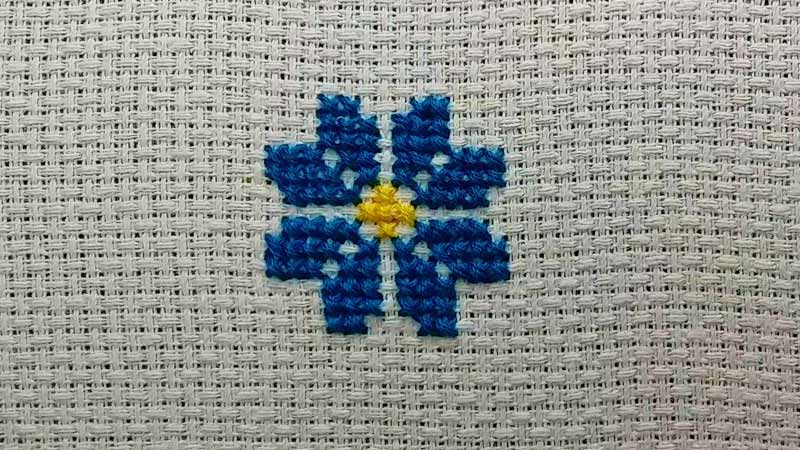
This technique involves making small ‘x’ stitches to create intricate patterns and designs. Cross-stitch is versatile and commonly used for creating detailed images, samplers, and decorative items. Its grid-like structure makes it ideal for precise and structured designs.
Crewelwork
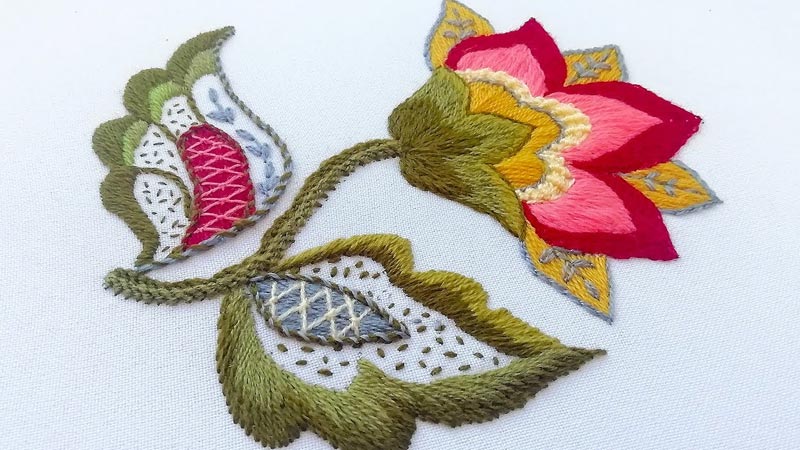
Originating from Jacobean England, crewelwork utilizes thick wool thread to create textured designs on heavy linen fabric. The raised texture in crewelwork adds depth and dimension to the artwork, resulting in visually stunning pieces with a distinctive 3D effect.
Stumpwork
Stumpwork embroidery goes beyond the flat surface of traditional embroidery, incorporating padded elements to create three-dimensional effects. This technique is often used to depict scenes, figures, and botanical motifs, bringing a sense of realism and depth to the artwork.
Ribbon Embroidery
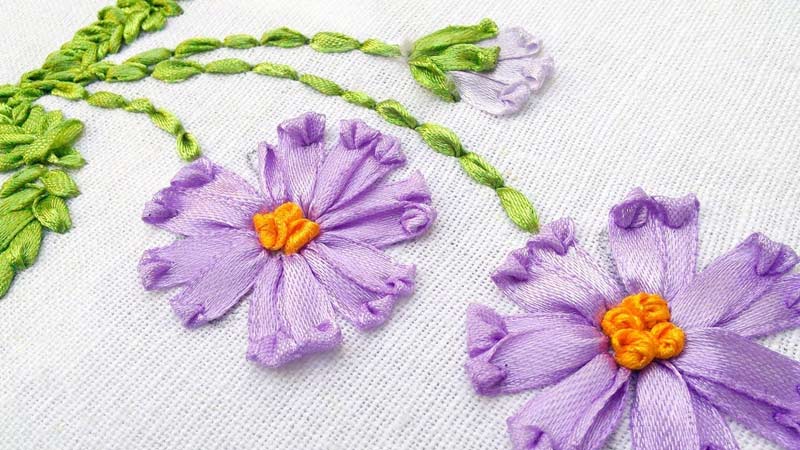
In ribbon embroidery, silk or satin ribbons are used instead of traditional embroidery threads. This technique creates soft, flowing designs with a romantic and delicate aesthetic. Ribbon embroidery is often used to embellish garments, accessories, and floral motifs.
Blackwork
Blackwork is characterized by its use of black thread to create intricate geometric patterns on a contrasting background.
Originating in medieval Europe, blackwork embroidery is known for its striking monochromatic designs and rich historical significance.
Why Aesthetics Are Vital in Embroidery Artistry? Unlocking the Essence
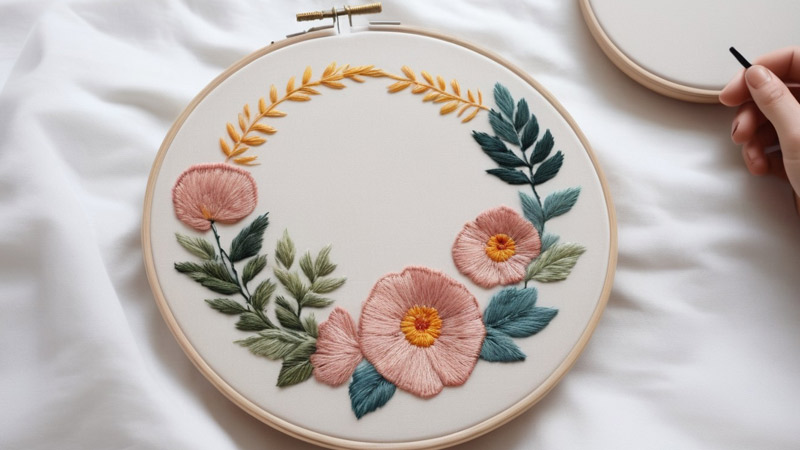
Aesthetics play a crucial role in embroidery art, elevating it beyond mere craftsmanship to create meaningful and captivating pieces.
Here’s why aesthetics are important in embroidery art:
Emotional Impact
Aesthetically pleasing embroidery can evoke a range of emotions in viewers. The choice of colors, design motifs, and overall composition can stir feelings of joy, tranquility, nostalgia, or excitement, creating a deep emotional connection between the viewer and the artwork.
Narrative and Symbolism
The design of an embroidered piece can tell stories, convey cultural heritage, or symbolize significant themes or events.
Traditional embroidery techniques often carry rich cultural meanings and symbolism, allowing artists to communicate narratives and traditions through their work.
Sensory Experience
Texture is a key aspect of embroidery aesthetics. The use of different types of threads, stitches, and embellishments adds tactile depth and dimension to the artwork, enhancing the sensory experience for viewers.
Texture invites touch and exploration, further engaging the viewer with the piece.
Harmonious Composition
Aesthetically pleasing embroidery relies on careful composition and arrangement of elements within the available space. A well-balanced composition ensures visual harmony and coherence, guiding the viewer’s eye across the artwork and enhancing its overall impact.
Expressive Creativity
Aesthetics provide embroidery artists with a means of expressing their creativity and artistic vision.
Through thoughtful color choices, intricate designs, and innovative techniques, artists can imbue their work with personal expression and aesthetic appeal, making each piece unique and memorable.
Let’s take a deeper dive into these factors:
| Factors | Details |
|---|---|
| Colors | Vibrant hues spark joy & energy |
| Softer tones create calmness & tranquility | |
| Design | Tells stories or symbolizes cultural heritage |
| Texture | Adds depth & dimension to the artwork |
Exploring Popular Themes and Motifs in Embroidery Art: Symbolism and Aesthetic Appeal Unveiled
Embroidery art offers a vast array of themes and motifs, each with its own unique symbolism and aesthetic appeal.
Here are some popular themes and motifs commonly found in embroidery art:
Floral Designs
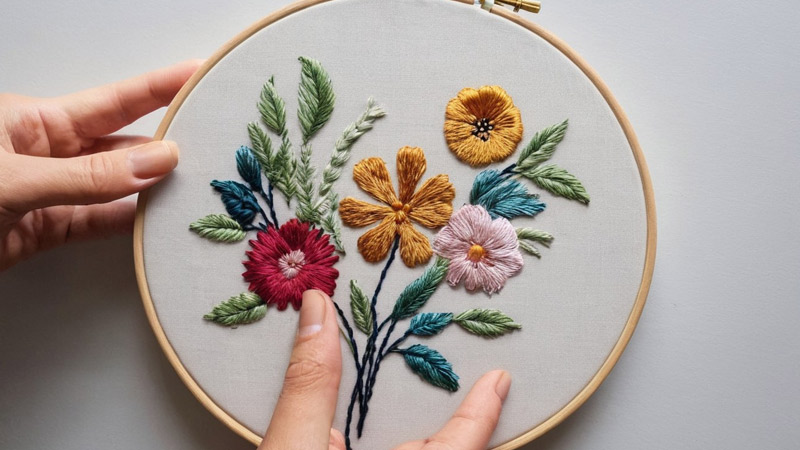
Flowers are one of the most common and beloved motifs in embroidery art. They symbolize various emotions and concepts across cultures.
For example:
- Roses: Represent love, passion, and romance.
- Lilies: Symbolize purity, innocence, and spirituality.
Geometric Patterns
Geometric motifs are characterized by their symmetry and balance, offering a visually pleasing aesthetic. These patterns can range from simple shapes to intricate tessellations, adding sophistication to embroidery pieces.
Folklore-Inspired Motifs
Folklore motifs draw inspiration from cultural heritage and traditional tales. Artists often incorporate intricate design patterns to narrate stories or depict mythological elements, creating visually captivating and intellectually stimulating embroidery art.
Celestial Bodies
Astronomical motifs such as stars, moons, planets, and constellations evoke a sense of wonder and awe. These celestial elements symbolize the mysteries of the universe and often add a touch of magic and fascination to embroidery pieces.
Animal Motifs
Animals are another popular theme in embroidery art, ranging from domestic pets to exotic creatures. Each animal carries its own symbolism and meaning, adding depth and character to the artwork.
For example:
- Cats & Dogs: Symbolize familiarity, comfort, and companionship.
- Elephants: Represent strength, wisdom, and longevity.
- Peacocks: Symbolize beauty, pride, and elegance.
Conclusion
Embroidery art, with its unique aesthetics, has truly fascinated me. It’s an art form that beautifully combines creativity, precision, and patience. The aesthetic charm of embroidery lies in the intricate designs that come to life through each stitch.
From simple outline stitches to complex satin stitches, it’s this variety of techniques that gives depth and detail to the artwork.
What really caught my eye was the use of color in embroidery art. It can range from monochromatic designs to vibrant multicolored works, each conveying a different emotion or story.
Embroidery art is versatile; it finds its place not only on clothing but also on home decor items like cushions and wall hangings.
The value and appreciation for this traditional craft have seen a resurgence over recent years. More people are discovering its therapeutic benefits as well as its potential as a medium for self-expression.
Here’s what we’ve discovered about embroidery art:
- It’s an ancient craft with rich historical significance.
- There’s a wide array of techniques used.
- Color plays a crucial role in enhancing the visual appeal.
- The versatility of embroidery allows it to be used in various mediums.
- Recent years have seen increased interest and appreciation for this traditional craft.
In essence, I believe the aesthetic allure of embroidery art lies within its details – every thread woven holds meaning, and every color chosen tells a story.
Whether you’re an admirer of art or an artist yourself looking for new mediums to explore, understanding the aesthetics of embroidery could open up new horizons for creativity and expression.
Leave a Reply